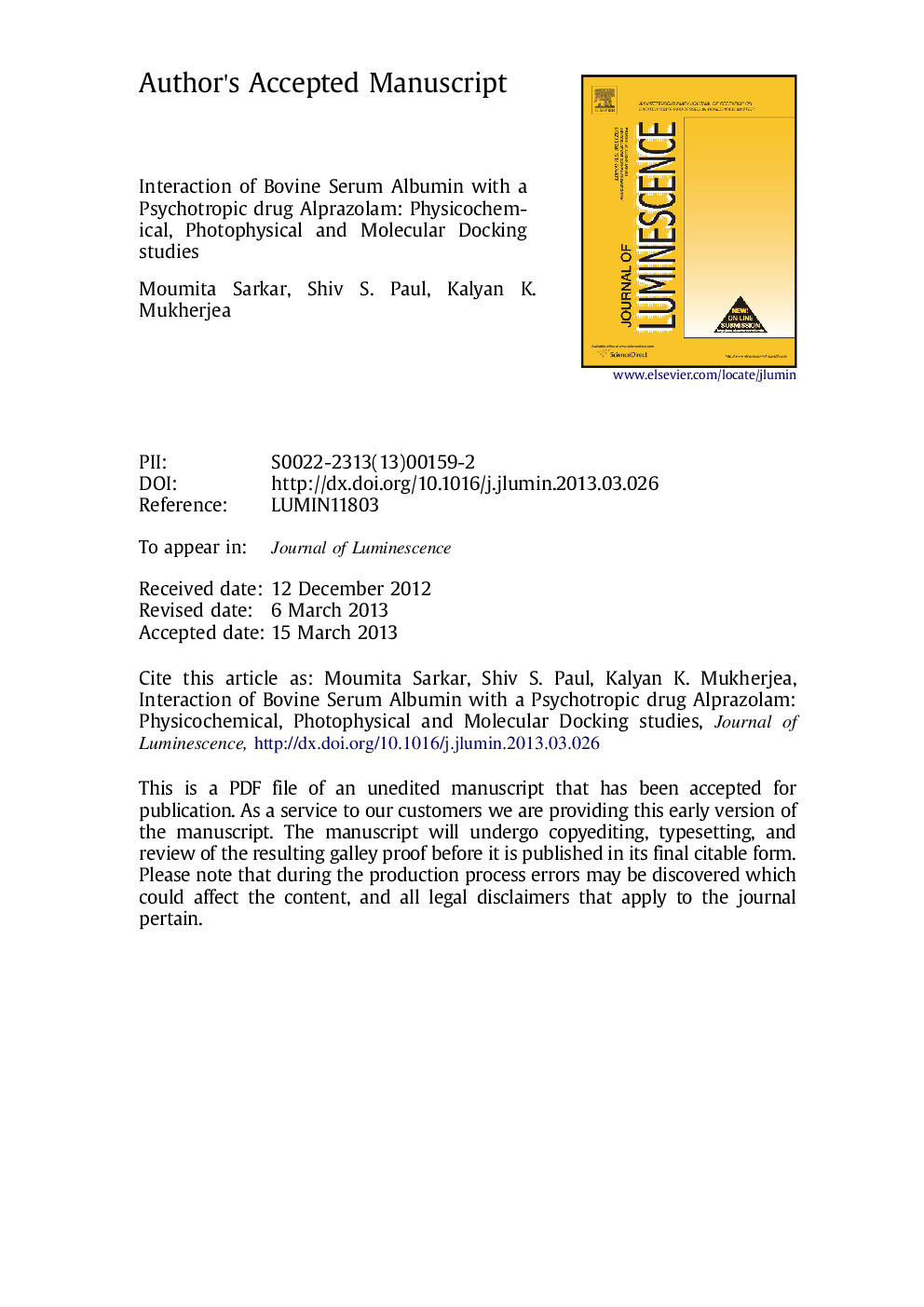| Article ID | Journal | Published Year | Pages | File Type |
|---|---|---|---|---|
| 5400118 | Journal of Luminescence | 2013 | 42 Pages |
Abstract
The interaction between alprazolam (Alp) and bovine serum albumin (BSA) has been investigated under physiological conditions by UV-vis, steady state as well as time-resolved fluorescence, circular dichroism (CD) spectroscopic and molecular docking studies. The binding constant K of Alp to BSA was found to be 1.8Ã105 L molâ1 from absorption data. Fluorometric studies suggested the formation of the Alp-BSA complex, while time-resolved fluorescence studies showed that the binding of Alp by BSA was mainly static and the effective rate constant is found to be 2.33Ã1013 L molâ1 sâ1. According to the modified Stern-Volmer equation, the Stern-Volmer quenching constants (KSV) between Alp and BSA at four different temperatures 295, 303, 308, 313 K were obtained to be 1.19Ã105, 1.05Ã105, 0.99Ã105 and 0.90Ã105 L molâ1, respectively. The change in enthalpy (ÎH) and entropy (ÎS) were calculated to be â11.66 and 57.64 J molâ1 Kâ1, respectively, indicating that the interaction was hydrophobic in nature. Site marker competitive experiments suggested that the binding of Alp to BSA primarily took place in sub-domain IIA, whereas the binding distance (r) between Alp and the tryptophan residue of BSA was obtained to be 1.87 nm by Förster's theory of non-radiative energy transfer. The conformational studies by CD spectroscopy showed that the presence of Alp decreased the α-helical content of BSA and induced the unfolding of the polypeptide of the protein. The change in conformation was also supported by excitation-emission matrix spectroscopy (EEMS) studies. The molecular docking experiment supports the above results and effectively proves the binding of Alp to BSA.
Keywords
Related Topics
Physical Sciences and Engineering
Chemistry
Physical and Theoretical Chemistry
Authors
Moumita Sarkar, Shiv Shankar Paul, Kalyan K. Mukherjea,
